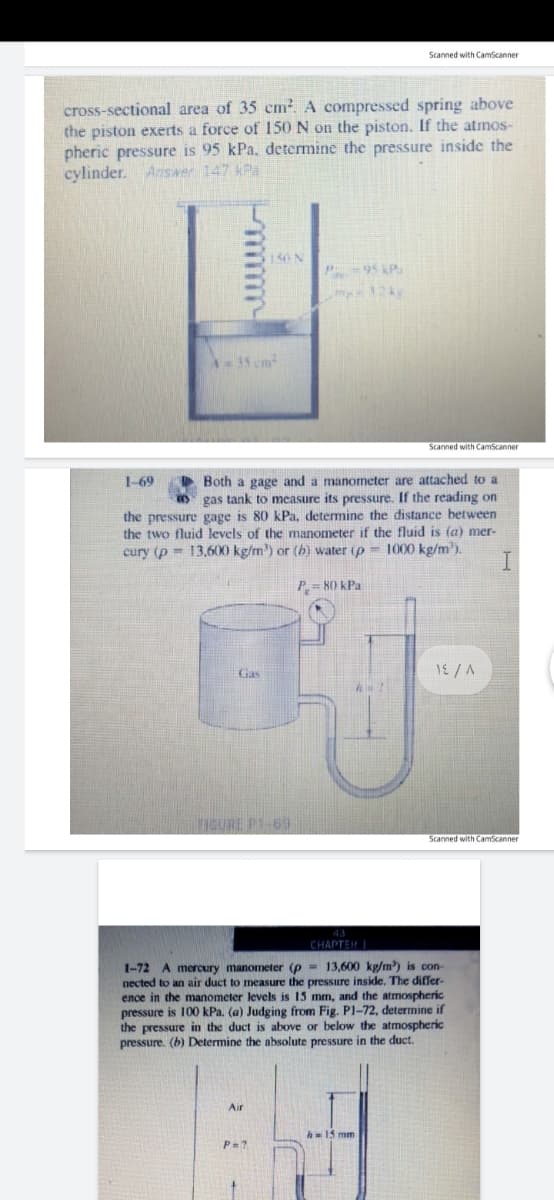cross-sectional area of 35 cm². A compressed spring above the piston exerts a force of 150 N on the piston. If the atmos- pheric pressure is 95 kPa, determine the pressure inside the cylinder. Ariswer 147 kPa 150 N 95 kPs A-35 cm
cross-sectional area of 35 cm². A compressed spring above the piston exerts a force of 150 N on the piston. If the atmos- pheric pressure is 95 kPa, determine the pressure inside the cylinder. Ariswer 147 kPa 150 N 95 kPs A-35 cm
International Edition---engineering Mechanics: Statics, 4th Edition
4th Edition
ISBN:9781305501607
Author:Andrew Pytel And Jaan Kiusalaas
Publisher:Andrew Pytel And Jaan Kiusalaas
Chapter8: Centroids And Distributed Loads
Section: Chapter Questions
Problem 8.121P: One side of the container has a 03-m square door that is hinged at its top edge. If the container is...
Related questions
Topic Video
Question

Transcribed Image Text:Scanned with CamScanner
cross-sectional area of 35 cm². A compressed spring above
the piston exerts a force of 150 N on the piston. If the atmos-
pheric pressure is 95 kPa, determine the pressure inside the
cylinder. Answer 147 kPa
150N
P-95 kP.
A=35 cm
Scanned with CamScanner
Both a gage and a manometer are attached to a
O gas tank to measure its pressure. If the reading on
the pressure gage is 80 kPa, determine the distance between
the two fluid levels of the manometer if the fluid is (a) mer-
1000 kg/m').
I.
1-69
cury (p = 13,600 kg/m) or (h) water (p
P = 80 kPa
Gas
HIGURE P1-69
Scanned with CamScanner
CHAPTER I
1-72 A mercury manometer (p = 13,600 kg/m) is con-
nected to an air duct to measure the pressure inside. The differ-
ence in the manometer levels is 15 mm, and the atrmospheric
pressure is 100 kPa. (a) Judging from Fig. P1-72, determine if
the pressure in the duct is above or below the atmospheric
pressure. (b) Determine the absolute pressure in the duct.
Air
Expert Solution
This question has been solved!
Explore an expertly crafted, step-by-step solution for a thorough understanding of key concepts.
Step by step
Solved in 2 steps with 2 images

Knowledge Booster
Learn more about
Need a deep-dive on the concept behind this application? Look no further. Learn more about this topic, mechanical-engineering and related others by exploring similar questions and additional content below.Recommended textbooks for you

International Edition---engineering Mechanics: St…
Mechanical Engineering
ISBN:
9781305501607
Author:
Andrew Pytel And Jaan Kiusalaas
Publisher:
CENGAGE L

International Edition---engineering Mechanics: St…
Mechanical Engineering
ISBN:
9781305501607
Author:
Andrew Pytel And Jaan Kiusalaas
Publisher:
CENGAGE L